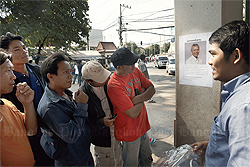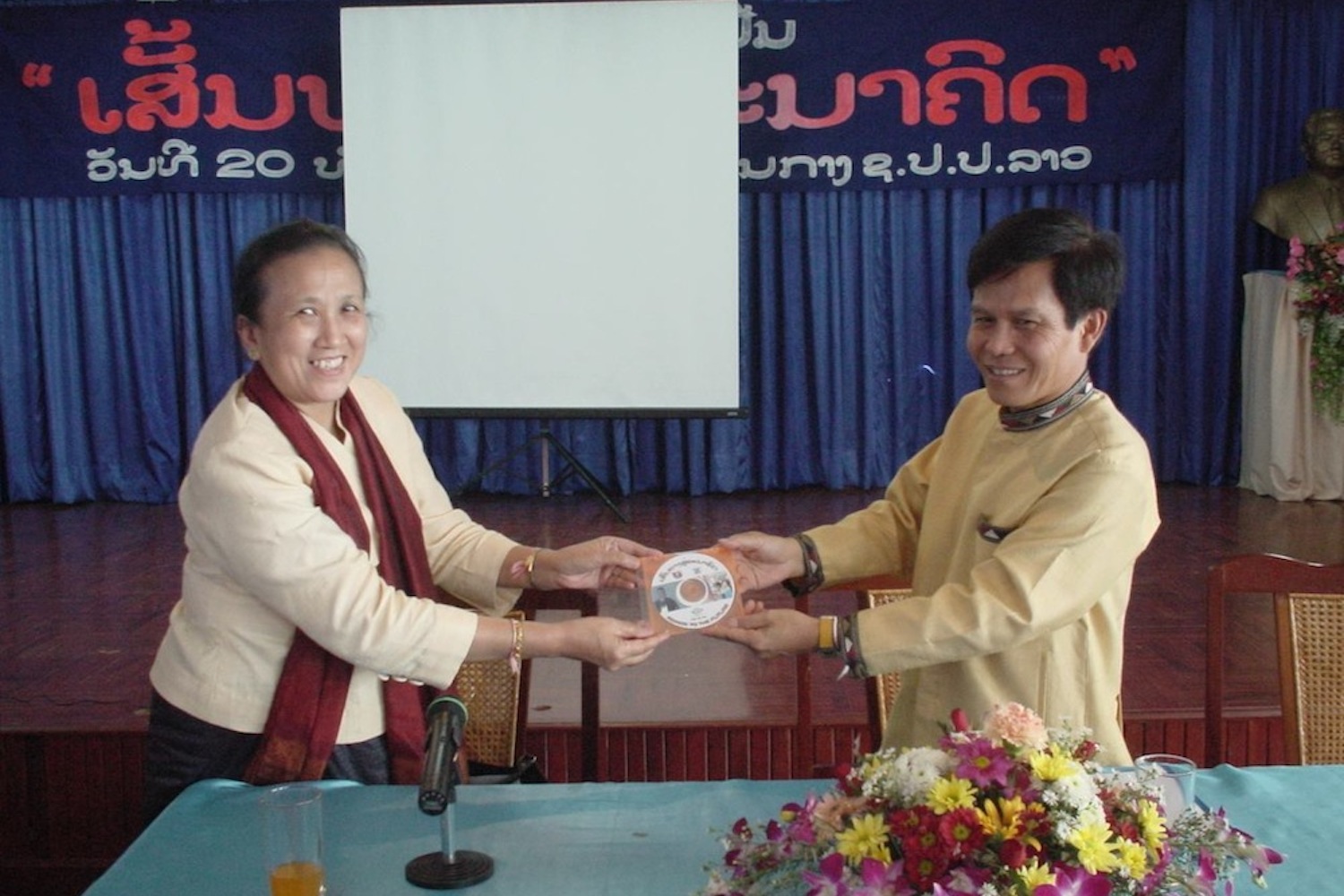Six months after the abduction of activist Sombath Somphone, the nation appears to be falling behind its neighbours and stuck in the grip of a self-serving regime ruling on fear

Six months after the disappearance in Vientiane of Sombath Somphone, the founder of an NGO set up to help rural youth, the Lao government is looking increasingly like the black sheep among its Asean.
As Myanmar progressively distances itself from its dictatorial past by liberalising the press and opening political space for the opposition, the Lao regime is sinking into an obscurantist authoritarianism which seems out of touch with the regional context.
The last sign of this anachronism came at the end of May when Lao authorities sent back to North Korea nine youths who had fled their Stalinist mother country and, with the help of South Korean Christian, had crossed from China into Laos.
”I would characterise the Laotian regime as a plutocracy that is auctioning the natural resources of the country for the benefit of a small group under the guise of communism,” said a Western observer in Vientiane.
And the disappearance of Mr Sombath, the most well known and respected Lao NGO worker, is a tragic testament to the country’s dark side.
On Dec 15, Mr Sombath was driving home in his Jeep along Tha Deua Road, which follows the Mekong on the eastern side of Vientiane. He was arrested by uniformed policemen and then led by plainclothes individuals to a pickup and driven away.
The scene was filmed by a CCTV camera and seen the day after by Mr Sombath’s wife, Ng Shui Meng, at the police station. She had the presence of mind to make a copy of the film on her mobile phone. [ It can be viewed at https://sombath.org ]
Since then, police have refused to release the original video. Despite having recognised that the investigation was hampered by their lack of technological expertise, Lao authorities have rejected an offer of assistance from the US embassy to help identify the people and vehicles seen in the film.
”The government has kept the same story from the beginning, speaking about a ‘business conflict”’, Ng Shui Maeng, a Singaporean national, said. ”They did not give me any substantive information.”

Most foreign observers in Vientiane consider that the authorities are at least partially involved in the disappearance.
A widespread theory is that a powerful Lao politician took the initiative to move against Mr Sombath and has subsequently been protected by the regime’s leaders.
”Laos is a small country and has a good security information system,” a long-time Vientiane resident said.
”It goes from the top to the village level. Every village has a system to look for strangers. How could the Politburo not know what has happened?”
The Lao police, so efficient when they want to act against pro-democracy demonstrators as they did in 1999, have not distinguished themselves during the investigation on Mr Sombath’s disappearance. After six months, they have not even been able to find his Jeep.
Lao authorities have a record of being ruthless against political opponents, even after the advent of a more liberal economic policy at the end of the 1980s.
”The Lao government uses hard methods against members of the anti-government movement on Thai territory. They hire gunmen to kill them,” Adisorn Semyaem, an expert on Laos at Chulalongkorn University’s Institute of Asian Studies, said.
A famous case was the killing in January, 2006, of Anouvong and Uraiwan Setthathirath, two Lao-Americans who claimed to belong to the Lao royal family.
In October, 1999, four organisers of an aborted pro-democracy demonstration in Vientiane were arrested and sentenced to 10 years in jail but were never seen again despite having completed their sentences.
”Laos is a deceptive country. We have no image of repression, because the repression is never visible. Things are happening but it is like nothing happens,” an NGO worker said.
But the disappearance of Mr Sombath has been especially surprising as he is not a political activist and has always worked in close cooperation with the authorities. After his studies in the US, he returned to his home country at the end of the 1970s and worked in agricultural development.
In 1996, he founded PADETC (Participatory Development Training Centre), an organisation with an objective to train young people so that they can disseminate information to villagers about their rights.
In 2005, he was awarded the Ramon Magsaysay award in recognition of his work.
”His focus has been to make the people understand their rights, not to confront the government,” Ng Shui Meng said.
Mr Sombath resigned last year from the leadership of the organisation.
Most sources are linking his disappearance with the prominent role he played as co-chairman of the organising committee of the Asia-Europe People’s Forum (APF), which took place in Vientiane last November, ahead of the Asia Europe Summit.
Mr Sombath and other co-chairmen organised the forum in agreement with the authorities and with the full participation of the various movements and fronts controlled by the regime. But a number of ”incidents”during the event seem to have irritated some top leaders.

A Lao vision statement co-written by Mr Sombath and summing up all the consultations that had taken place before the forum stated that economic growth in itself was not the solution to all problems in Laos – a position that could be seen as contradicting the obsessive quest of the country’s leadership for high economic growth. Lao authorities blocked its distribution at the forum.
During the APF, some villagers took to the stage to describe how their land had been confiscated to be given to concession owners – most of them Vietnamese or Chinese companies – in different regions.
”This is one of the most sensitive issues in a country where mining operations and rubber plantations are developing fast,” an NGO director in Vientiane said.
Some of the villagers were threatened on the spot, either verbally or via phone text messages accusing them of being ”traitors to the country”. They continued to be harassed after returning to their villages.
The phone number from which the messages were sent was shown to the authorities by the forum organisers, but no action was taken.
”The forum brought civil society out,” the NGO director said. ”It showcased an ability to organise and mobilise, also at the provincial level. It was unsettling for authorities.”
The actions also made the government aware of the potential of civil society groups, another NGO source said. ”They felt they needed to send a message by moving against Sombath,” he said.
An atmosphere of fear and intimidation surrounds the case. Almost no sources based in Vientiane agreed to be identified by name for this report. The people sympathetic to Mr Sombath within the circles of power have been told to ”mind their own business”.
”There is a wall of silence, and I don’t know why,” Ng Shui Meng said.
In a country as impenetrable as Laos, where the press is totally under government control and where judges are named by the Lao People’s Revolutionary Party, it is not easy to track down who precisely could be behind Mr Sombath’s disappearance. A few names are circulating regularly: Those of children of Politburo members, offshoot of a nomenklatura who exploit the system to seize economic opportunities.
”The structural principle of Laotian politics is based on family dynasties,” a Western analyst in Vientiane said. ”They work across generations. You have 10 or 15 families who compete internally with each other, but who, outside, have the same interests.”
The spoiled children of these families are said to be ”totally wild” and not dissimilar to the ”Chinese princelings”. They drive across Vientiane in their sport cars, knowing that in case of accidents they can escape the court because of family protection. They control businesses in various provinces, most notably in Khammouane and Savannakhet.
Martin Stuart-Fox, emeritus professor at the University of Queensland in Australia who has studied Lao politics for the past 50 years, agrees that patronage is the key word to understanding the regime.
”If they take a model from anywhere, they take it from Cambodia,” he said.
”Like Cambodia, the politics of Laos is based on patron-client relationships. Powerful people in the Politburo are where they are because of the way they have built political networks within the party.”
And the generation of well-meaning Lao technocrats in their 40s and 50s trained in Europe, Australia or the US have also adapted to this pattern, he said.
”They may wish they had a more open society, but they don’t. And they know they have to be part of that patron-client system if they want to benefit,” Mr Stuart-Fox said.
One thing is clear: The people who organised Mr Sombath’s disappearance and those in the leadership who have helped to cover it up have grossly underestimated the extent of the international reaction.
”They probably thought it’d be soon back to business as usual, but that’s not been the case,” a Western representative in Laos said.
”The cost for them is getting higher by the minute. And the only solution is that they release him, even if it involves a loss of face”.
Most European countries have made Mr Sombath’s case a priority issue in any bilateral meetings, and Lao ministers travelling in Europe are constantly reminded of the case. In Thailand, a broad network has been set up by friends, NGO workers, journalists and academics to help search for Mr Sombath and keep the pressure on Lao authorities.
At the Asean government level, Singapore has, by far, been the most active, while the Yingluck Shinawatra government has seemed particularly unconcerned about the fate of Mr Sombath.
Even undemocratic Vietnam, Laos’ ”big brother” since the Pathet Lao takeover in Vientiane in December 1975, is said to have been irritated by the inept and incompetent handling of the case by the authorities in Vientiane, which is beginning to affect its reputation.
”There has never been so much talk on the bad practices of Vietnamese companies in Laos,” a source involved in land issues in the country said of the shifting attitude within Laos.
During the Asean summit in April in Brunei, some member countries proposed that the issue of disappearances be written (along with the Rohingya issue) on the agenda of the Asean Intergovernmental Commission on Human Rights, but there was no consensus and the proposal was blocked.
Ng Shui Meng said that Asean can play a crucial role, because, ”the case is not only a Lao issue but also a regional issue, as Sombath represents the voice of Asean on people-centred and sustainable development.”
Despite the fear created by the disappearance, some Westerners working in Vientiane consider that the tragic event has also some less negative impact
”The Lao government is not a government by law but a government by fear,” an NGO source said.
”But what happened made a dormant fear more apparent. The unknown line has materialised, which is healthier.”
The scope of the international concern, the largest ever faced by Laos, will also probably act as a protection for other development workers and humanitarian agents who are taking risks to promote a more open and more just society, a fight for which Mr Sombath has become a symbol.
”Those who did it will now think twice before doing it again,” the NGO source said.
